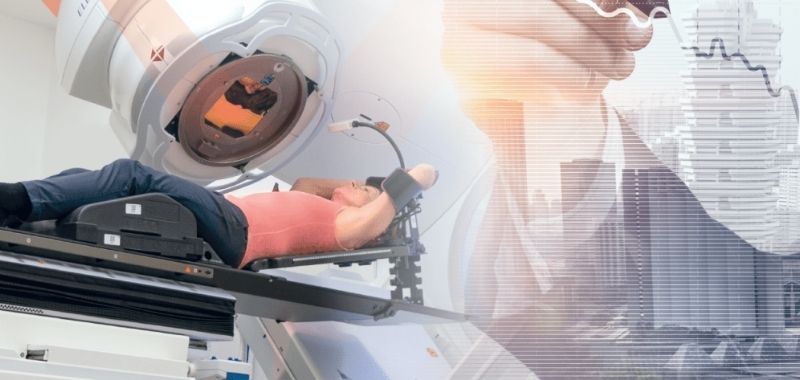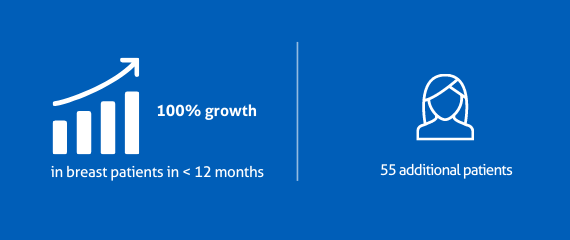Recognizing the value of local patient marketing, Vision RT has developed +20 marketing assets (e.g., brochures, ads, scripts) for you to customize and use in your market to promote AlignRT/SGRT. Executing a local campaign can differentiate your center from your competition and drive patients to seek treatment at your center.
A number of these resources also highlight the tattoo and mark-free benefit of AlignRT use, if applicable at your clinic.
78 % of patients prefer a tattoo-less option 35
Case study – U.S. Midwestern Cancer Center
- Using Vision RT marketing resources, one center executed a local marketing campaign that focused on the heart-sparing benefit of AlignRT for left-breast cancer patients. Assets used were website copy and images, a press release, print ads, social ads, and patient education brochures.
- Measured results showed a 100% increase in patient volume (55 to 110) in less than 12 months.
Patients are willing to travel 45 additional miles for a center with a tattoo-less option 35




